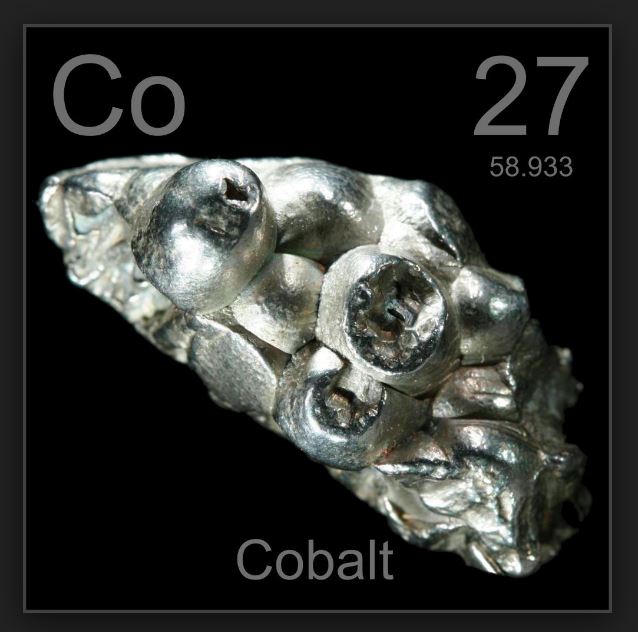


Like many metals, cobalt does not naturally occur in pure metallic form. Iron-Manganese Nodules on the sea floor are a significant and as yet un-tapped cobalt resource. Of 150 Million tonnes of known resources, seafloor resources account for 125 Million tonnes. Terrestrial deposits account for all production, but they are a small fraction of the total resource, as the largest concentrations of Cobalt are in seafloor Iron-Manganese nodules and crusts. Artisanal mining of Cobalt is a significant source of production in the Democratic Republic of Congo but does not occur elsewhere. Hence the Cobalt market is a function of the Nickel and Copper markets as supply is determined by how much demand there is these markets. There are very minor deposits were Cobalt is the primary commodity but these only make up 3% of world-wide production. Of the three types, production from the copper deposits of Central African Copper Belt are by far the largest. Three main deposit types make up 97% of world cobalt production: The copper-cobalt deposits of the Central African Copper Belt, nickel laterite deposits such as those of Australia and New Caledonia, and magmatic nickel sulfide deposits like Sudbury and Norilsk. Since Cobalt rarely forms economic in concentrations it is typically recovered as a by-product from other types of deposits. Deposits Commercial “Cobalt Blue” pigment In particular, cobalt is a key ingredient in the production of lithium batteries. It is a critical ingredient in high temperature and wear-resistant strategic metals as well as high temperature magnets and rechargeable batteries. Metallic cobalt is ferromagnetic (can be magnetized) and has a very high melting point of 1500 degrees Celsius. Although cobalt (Co) is well known for the blue dyes that bear its name, metallic cobalt is a lustrous silver-grey.


 0 kommentar(er)
0 kommentar(er)
